Lexington, Kentucky, Hgh State Clinic, Hgh Injections, Hrt Doctors
Lexington, Kentucky Blood Testing Facilities
 Represents a LabCorp blood testing facility
Represents a LabCorp blood testing facility Represents a Quest Diagnostics blood testing facility
Represents a Quest Diagnostics blood testing facility
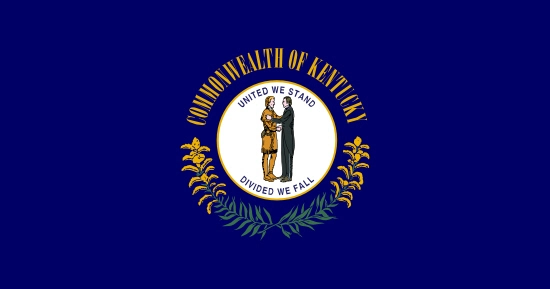
Nearby Labcorp Blood Testing facilities:
- Labcorp Center Distance: 1 m, 1401 Harrodsburg Rd Ste B-195, Lexington, Fayette County, KY, 40504
- Labcorp Center Distance: 3 m, 1000 Monarch St Ste 180, Lexington, Fayette County, KY, 40513
- Labcorp Center Distance: 4 m, 3475 Richmond Rd 260, Lexington, Fayette County, KY, 40509
- Labcorp Center Distance: 23 m, 101 Medical Heights Dr Ste G, Frankfort, Franklin County, KY, 40601
- Labcorp Center Distance: 24 m, 1110 Lancaster Road Suite 1, Richmond, Madison County, KY, 40475
- Labcorp Center Distance: 29 m, 250 Foxglove Drive Ste 4, Mount Sterling, Montgomery County, KY, 40353
- Labcorp Center Distance: 55 m, 919 E. Chambers Blvd, Bardstown, Nelson County, KY, 40004
- Labcorp Center Distance: 59 m, 10216 Taylorsville Rd Ste 750, Jeffersontown, Jefferson County, KY, 40299
- Labcorp Center Distance: 63 m, 3901 Dutchmans Ln Ste 106, Louisville, Jefferson County, KY, 40207
- Labcorp Center Distance: 65 m, 3430 Newburg Rd Ste 110, Louisville, Jefferson County, KY, 40218
- Labcorp Center Distance: 66 m, 30 Med Park Drive, Somerset, Pulaski County, KY, 42503
- Labcorp Center Distance: 67 m, 202 West 7Th Street, London, Laurel County, KY, 40741
- Labcorp Center Distance: 69 m, 5601 S 3Rd St Basement, Louisville, Jefferson County, KY, 40214
- Labcorp Center Distance: 71 m, 500 Ohio Pike, Cincinnati, Clermont County, OH, 45255
- Labcorp Center Distance: 74 m, 825 University Woods Dr Ste 12, New Albany, Floyd County, IN, 47150
- Labcorp Center Distance: 78 m, 4767 N Bend Rd, Cincinnati, Hamilton County, OH, 45211
- Labcorp Center Distance: 80 m, 1400 Cumberland Falls Hwy, Corbin, Whitley County, KY, 40701
- Labcorp Center Distance: 81 m, 9030 Montgomery Rd, Cincinnati, Hamilton County, OH, 45242
- Labcorp Center Distance: 83 m, 10475 Reading Rd Ste 306, Evandale, Hamilton County, OH, 45241
- Labcorp Center Distance: 85 m, 25800 S Main Street (St Rt 41), Peebles, Adams County, OH, 45660
- Labcorp Center Distance: 87 m, 2740 Mack Rd, Fairfield, Butler County, OH, 45014
- Labcorp Center Distance: 89 m, 780 Nilles Rd B, Fairfield, Butler County, OH, 45014
- Labcorp Center Distance: 90 m, 721 Reading Rd, Mason, Warren County, OH, 45040
- Labcorp Center Distance: 94 m, 1275 N High St, Hillsboro, Highland County, OH, 45133
- Labcorp Center Distance: 95 m, 903 Nw Washington Blvd Ste C, Hamilton, Butler County, OH, 45013
Nearby Quest Blood Testing facilities:
- Quest Center Distance: 4 m, 141 N Eagle Creek Dr, Lexington, Fayette County, KY, 40509-2538
- Quest Center Distance: 29 m, 805 Alexa Dr, Mt Sterling, Montgomery County, KY, 40353-1000
- Quest Center Distance: 67 m, 1169 Eastern Pkwy, Louisville, Jefferson County, KY, 40217-1415
- Quest Center Distance: 71 m, 7235 Beechmont Ave, Cincinnati, Hamilton County, OH, 45230-4116
- Quest Center Distance: 80 m, 1321 Cumberland Falls Hwy, Corbin, Whitley County, KY, 40701-2720
- Quest Center Distance: 81 m, 2475 W Galbraith Rd, Cincinnati, Hamilton County, OH, 45239-4369
- Quest Center Distance: 87 m, 9313 S Mason Montgomery Rd, Mason, Warren County, OH, 45040-8826
- Quest Center Distance: 89 m, 313 Federal Dr Nw, Corydon, Harrison County, IN, 47112-2078
- Quest Center Distance: 90 m, 7608 Cox Ln, West Chester, Butler County, OH, 45069-6547
- Quest Center Distance: 95 m, 1426 Main St, Hamilton, Butler County, OH, 45013-1004
Lexington Hormone Replacement Therapy Services
Bio-Identical Hormone Restoration is a 21st Century form of Hormone Treatment which is taking the world by storm. Hormones are chemical messengers which encourage both the mind and the body to work in perfect harmony. Hormone Imbalance is one of the key health issues which encourage premature aging and increase the risk of a variety of medical conditions which reduce vitality and increase mortality risk, including Diabetes, Stroke, Heart Attack, and Alzheimer's Disease.
The Conscious Evolution Institute is a licensed and certified medical Hormone Clinic which specializes in providing diagnostic evaluation and treatment to men and women over the age of thirty in order to diagnose and treat various forms of Hormone Imbalance and Deficiency. If you believe that you might be a candidate for any of the various hormone restoration treatments that we provide, we encourage you to contact us via the form to your right, or by phoning us at the number at the top of the page. We are proud to serve the Lexington area, as well as the entire state of Kentucky. From Georgetown to Richmond, from Lawrenceberg to Mount Sterling, we are on your side.
Lexington Testosterone Replacement for Andropause and Low-T
Among our most asked about treatments is Bio-Identical Testosterone. Testosterone is the lifeblood of the male body. It inspires virility and sexual health, and it also does many things to promote overall health and wellness. Did you know that men with Testosterone Deficiency are more likely to suffer from Cardiovascular disease, as well as Obesity and Alzheimer's? Testosterone Deficiency is most well-recognized because of its effects on sexual function, but it also impedes health in a number of other ways.
If you have noticed a decline in sexual desire and function as you age, consider Lexington HRT with Testosterone in order to treat the source of your sexual dysfunction while also safeguarding your health from other negative factors. Testosterone comes in many different forms, including Testosterone Injections, Low-T Patches, and Transdermal Creams and Gels. With a single appointment, we can assess your Hormone Balance and help you decide if Testosterone can help improve your health.
Lexington HGH Therapy for Growth Hormone Deficiency
Another fine treatment option available at the Consious Evolution Institute is Bio-Identical Human Growth Hormone Injection Therapy. HGH is a hormone which is primarily responsible for sustaining normal and healthy cellular metabolism during adulthood. This is an incredibly important function, and Growth Hormone plays a role in the healthy and normal function of practically every system in the human body.
Beginning around thirty years of age, Growth Hormone Levels fall into a state of steady decline, which continues until the end of one's life. It takes many years, or even decades, for this decline to present symptoms, but the symptoms can be widespread and significant. Patients with HGH Deficiency experience issues with low energy, weight gain, loss of strength and exercise capacity, memory issues, and cognitive decline, as well as trouble sleeping, loss of sex drive, and depression. Our Lexington Growth Hormone Clinic can help you get the treatment you need to reduce the impact of Growth Hormone Deficiency on your health and your life.
Lexington Sermorelin Therapy for HGH Deficiency
Growth Hormone is not the only option available for Lexington HGH Deficiency patients, however. Sermorelin Acetate Therapy is an HGH Alternative that provides the same benefits of Growth Hormone with significant benefits for certain patients. Sermorelin is the analog of a naturally-produced HGH Secretagogue known as GH-RH, or Growth Hormone-Releasing Hormone. Sermorelin encourages your body to produce its own Real HGH, subverting the need for Growth Hormone Injections in patients with a healthy pituitary. Sermorelin is cheaper than HGH and available off-label, while encouraging natural, youthful Growth Hormone balance that matches and exceeds that of Bio-Identical Growth Hormone.
Lexington HCG Weight Loss Injections
Obesity is a serious concern among Americans, including those in Kentucky and other parts of the South. Millions across the country struggle with their weight, unable to reach a healthy weight to improve their health and their lives. If you are among these millions, and you've been failed repeatedly by other diets, or are looking toward surgical techniques in an attempt to lose the weight, consider the HCG Diet. Bio-Identical HCG, when combined with a specialized low-calorie diet, has helped overweight men and women lose as much as thirty pounds per month, rapidly encouraging weight loss while preserving a normal and healthy metabolism. Contact us to learn more!
Lexington, Kentucky Information
Lexington is located in the heart of Kentucky, and is most notable for being the home of the University of Kentucky Wildcats. Louisville may be home to the Kentucky Derby, by Lexington shares the love for equine performance and culture, and the city is actually referred to as the Horse Capital of the World. Lexington is a city with a high quality of life, and is also home to Transylvania University. Like most college-oriented towns, the population of Lexington is highly educated, and is actually considered one of the most highly educated cities in the United States, boasting nearly 40% of residents which have acquired a college education.
The largest employer in Lexington is the University, but the city has made a name for itself in certain sectors of the economy, including manufacturing and technology. Major companies that are heavily invested in the Lexington economy are IBM, Lockheed Martin, Lexmark International, and Xerox.
As Lexington is one of the oldest cities in the state of Kentucky, founded in 1775, there are a wide variety of cultural landmarks in the city, including the Mary Todd Lincoln House, the Lexington Cemetery, the Headley-Whitney Museum, and the Aviation Museum of Kentucky. The city is also popular among bluegrass musicians, and hosts the Festival of the Bluegrass every year in the month of June. The city and the surrounding area are filled with amazing wildlife and scenic opportunities, the most popular of which are McConnell Springs, the Arboretum, and the Raven Run Nature Sanctuary,.
All About Lexington, Kentucky Geographic Area
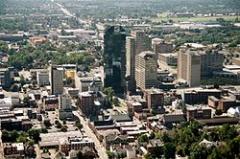
Lexington (officially Lexington-Fayette Urban County) is the second-largest city in Kentucky and the 63rd largest in the US. Known as the "Thoroughbred City" and the "Horse Capital of the World", it is located in the heart of Kentucky's Bluegrass region. In the 2010 Census the city's population was 295,803, anchoring a metropolitan area of 472,099 people and a Combined Statistical Area of 687,173 people.
Lexington ranks tenth among US cities in college education rate, with 39.5% of residents having at least a bachelor's degree. It is home to the headquarters of Tempur-Pedic, International, Lexmark International, the Kentucky Horse Park, Keeneland race course, Red Mile race course, Transylvania University, the University of Kentucky and Bluegrass Community & Technical College.
Lexington was founded in June 1775 in what was then Virginia (17 years before Kentucky became a state in 1792). A party of frontiersmen, led by William McConnell, camped on the Middle Fork of Elkhorn Creek (today called Town Branch and rerouted under Vine Street) at the location known today as McConnell Springs. Upon hearing of the colonists' victory in the Battles of Lexington and Concord, on April 19, 1775, they named their campsite Lexington after Lexington, Massachusetts. Due to the danger of Indian attacks, permanent settlement was delayed for four years. In 1779, Colonel Robert Patterson and 25 companions came from Fort Harrod and erected a blockhouse. Cabins and a stockade were soon built, making the fort, known as Bryan Station, a place of importance. Colonists defended it against a British and American Indian attack in 1782, during the last part of the American Revolution.
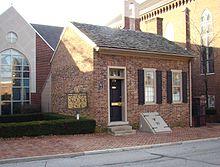
The town of Lexington was established on May 6, 1782, by an act of the Virginia General Assembly. The First African Baptist Church was founded c. 1790 by Peter Durrett, a Baptist preacher and slave held by Rev. Joseph Craig. Durrett helped guide "The Traveling Church", a group migration of several hundred pioneers led by the preacher Lewis Craig and Captain William Ellis from Virginia to Kentucky in 1781. It is the oldest black Baptist congregation in Kentucky and the third oldest in the United States.
By 1820, Lexington was one of the largest and wealthiest towns west of the Allegheny Mountains. So cultured was its lifestyle that the city gained the nickname "Athens of the West". One early prominent citizen, John Wesley Hunt, became the first millionaire west of the Alleghenies. The growing town was devastated by a cholera epidemic in 1833: 500 of 7,000 residents died within two months, including nearly one-third of the congregation of Christ Church Episcopal. London Ferrill, second preacher of First African Baptist, was one of three clergy who stayed in the city to serve the suffering. Additional cholera outbreaks occurred in 1848 ae49 and the early 1850s. Cholera was spread by people using contaminated water supplies, but its transmission was not understood in those years. Often the wealthier people would flee town for outlying areas to try to avoid the spread of disease.
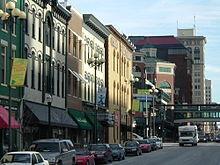
Planters held slaves for use as field hands, laborers, artisans, and domestic servants. In the city, slaves worked primarily as domestic servants and artisans, although they also worked with merchants, shippers, and in a wide variety of trades. In 1850, one-fifth of the state's population were slaves, and Lexington had the highest concentration of slaves in the state. It also had a population of free blacks. By 1850, First African Baptist Church, led by London Ferrill, a free black, had a congregation of 1820, the largest of any, black or white, in the state.
Many of 19th-century America's most important people spent part of their lives in the city, including U.S. President Abraham Lincoln and Confederate President Jefferson Davis (who attended Transylvania University in 1823 and 1824); Confederate general John Hunt Morgan; U.S. Senator and Vice President John C. Breckinridge; and Speaker of the House, U.S. Senator, and Secretary of State Henry Clay, who had a plantation nearby. Lincoln's wife Mary Todd Lincoln was born and raised in Lexington, and the couple visited the city several times after their marriage in 1842.
In 1935 Lexington founded one of the first drug rehabilitation clinics, known as the "Addiction Research Center". Expanded as the first alcohol and drug rehabilitation hospital in the United States, it was known as "Narco" of Lexington. The hospital was later converted into a federal prison.
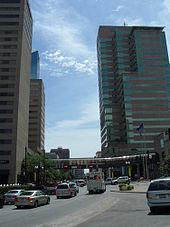
Lexington, which includes all Fayette County, consists of 285.5 square miles (739.4 km2), mostly gently rolling plateau, in the center of the inner Bluegrass Region. The area is noted for its fertile soil, excellent pastureland, and horse and stock farms. Poa pratensis (bluegrass) thrives on the limestone beneath the soil's surface, playing a major role in the area's scenic beauty and in the development of champion horses. Numerous small creeks rise and flow into the Kentucky River.
The Lexington-Fayette Metro area is home to five counties: Clark, Jessamine, Bourbon, Woodford, and Scott. This is the second largest metro area in the Ohio Valley and in Kentucky. According to the United States Census Bureau, the city has a total area of 285.5 square miles (739 km2). 284.5 square miles (737 km2) of it is land and 1.0 square mile (2.6 km2) of it (0.35%) is water.
Lexington is in the humid subtropical climate, although nearing the humid continental climate. Summers are hot and humid, and winters are cool with mild periods.
The average temperature in Lexington is 54.9 °F (12.7 °C). Annual precipitation is 45.68 inches (1,160 mm). Lexington and the Bluegrass have four distinct seasons that include cool plateau breezes, moderate nights in the summer, and no prolonged periods of heat, cold, rain, wind, or snow.
Lexington is recognized as a high allergy area by the Asthma and Allergy Foundation of America. The results for the spring of 2008 rank Lexington at first.
Lexington features a diverse cityscape. From its vibrant downtown, which supports infill and historic preservation projects, to its famed horse farms, the city prides itself in featuring an urban growth boundary that includes greenbelts and strict zoning definitions. This has been done not only to protect the Bluegrass landscape from further development but to protect thoroughbred horse farms, the trademark industry of the region.
Forbes has named Lexington as one of the world's seventeen cleanest cities.

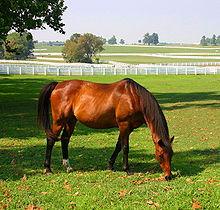
Lexington faces a rare challenge among American cities in that it must manage a rapidly growing population while maintaining the character of the surrounding horse farms that give the region its identity. To do so Lexington enacted the nation's first Urban Growth Boundary in 1958, where new development could only occur in the Urban Service Area. It set a strict minimum area requirement, currently 40 acres (160,000 m2), to maintain open space in the Rural Service Area. A historic District Zoning Overlay was adopted as well to protect the historic character of the surrounding neighborhoods. Two years later, a comprehensive Design Plan for the downtown was completed, which called for the removal of the Chesapeake and Ohio Railway lines on what is today's Vine Street. In 1967, the Urban Service Area was decreased in area; various zoning regulations were also amended from the original 1958 issue. Several years later, in 1973, the first Lexington Comprehensive Plan was completed.
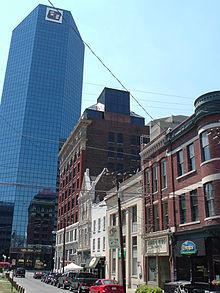
In 1980, the Comprehensive Plan was updated and the Urban Service Area was modified to include Urban Activity Centers and Rural Activity Centers. The Urban Activity Centers were commercial and light-industrial districts in urbanized areas, while Rural Activity Centers were retail trade and light-industrial centers clustered around the Interstate 64/Interstate 75 interchanges. In 1996, the Urban Service Area was expanded when 5,300 acres (21 km2) of the Rural Service Area was acquired through the Expansion Area Master Plan. This was not without controversy; the first major update to the Comprehensive Plan in over a decade was accompanied by arguments about the future of Lexington and the thoroughbred farms. The Expansion Area Master Plan included impact fees, assessment districts, neighborhood design concepts, design overlays, mandatory greenways, major roadway improvements, stormwater management and open space mitigation for the first time; it also included a draft of the Rural Land Management Plan, which included large-lot zoning and traffic impact controls. A pre-zoning of the entire expansion area was refuted in the Plan. A 50-acre (200,000 m2) minimum proposal was also defeated, although discussion of the proposal led to a deluge of 10-acre (40,000 m2) subdivisions in the Rural Service Areas.
Three years after the expansion was initiated, the Rural Service Area Land Management Plan was adopted, which increased the minimum lot size in the agricultural rural zones to 40-acre (160,000 m2) minimums. In 1998, a moratorium was issued on rural lot creations to curb the development of new rural 10-acre (40,000 m2) subdivisions, which were incompatible with the existing agricultural uses. Two years later, the Purchase of Development Rights plan was adopted, which granted the city power to purchase the development rights of existing farms; in 2001, $40 million was allocated to the plan from a $25 million local, $15 million state grant. An Infill and Redevelopment study was also initiated during that time, along with design guidelines for the areas surrounding the new Fayette County courthouses.
Federally, Lexington is part of Kentucky's 6th congressional district, represented by Democrat Ben Chandler, elected in 2004.
The state's senior member of the United States Senate is the Republican Floor Leader, Mitch McConnell, elected in 1984. The state's junior member of the United States Senate is Rand Paul, elected in 2010. The Governor of Kentucky is Democrat Steve Beshear, elected in 2007.
In 1974, the governments of the city of Lexington and Fayette County, Kentucky, combined to create the current Lexington-Fayette Urban County Government, often abbreviated LFUCG. Lexington has an elected mayor and city council-style of government.
On November 2, 2010, former vice-mayor Jim Gray was elected mayor, becoming the city's first openly gay mayor. He was sworn into office on January 2, 2011, by Kentucky Supreme Court justice Mary Noble. Gray was preceded by Mayor Jim Newberry, and the two collaborated on developing improved industrial and agricultural opportunity for the City of Lexington and the State of Kentucky.
The Urban County Council is a 15-member legislative group. Twelve of the members represent specific districts and serve two-year terms; three are elected city-wide as at-large council members and serve four-year terms. The at-large member receiving the highest number of votes in the general election automatically becomes the Vice Mayor who, in the absence of the Mayor, is the presiding officer of the Council. The current council members are:
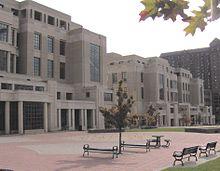
Primary law enforcement duties within Lexington are the responsibility of the Lexington-Fayette Urban County Government Division of Police. The Division of Police resulted from the merger of the Lexington Police Department with the Fayette County Patrol in 1974. The Fayette County Sheriff's Office is responsible for court service, including court security, prisoner transport, process and warrant service, and property tax collection. The University of Kentucky Police Department, the Transylvania University Department of Public Safety, Blue Grass Airport Public Safety, Fayette County Schools Department of Law Enforcement, the Veterans Affairs Police Department and the Kentucky Horse Park Police also have jurisdiction within their geographic areas in Lexington-Fayette County. In addition, the Lexington-Fayette Animal Care & Control exercises law enforcement over animal control issues and the Kentucky State Police, KSP Division of Commercial Vehicle Enforcement and Kentucky Department of Fish and Wildlife Resources can be seen performing their respective law enforcement duties within the county.
The Lexington-Fayette Metropolitan Statistical Area (MSA) includes Bourbon, Clark, Fayette, Jessamine, Scott, and Woodford counties. The MSA population in 2006 was estimated at 436,684. The Lexington-Fayette-Frankfort-Richmond, KY Combined Statistical Area had an estimated population of 645,006 in 2006. This includes the metro area and an additional seven counties.
As of the census of 2000, there were 260,512 people, 108,288 households, and 62,915 families residing in the city. The population density was 915.6 per square mile (353.5 /km2). There were 116,167 housing units at an average density of 408.3 per square mile (157.6 /km2). The racial makeup of the city was 81.04% White, 13.48% Black or African American, 0.19% Native American, 2.46% Asian, 0.03% Pacific Islander, 1.21% from other races, and 1.58% from two or more races. Hispanics or Latinos of any race were 3.29% of the population.
There were 108,288 households out of which 27.3% had children under the age of 18 living with them, 43.5% were married couples living together, 11.5% had a female householder with no husband present, and 41.9% were non-families. 31.7% of all households were made up of individuals and 7.5% had someone living alone who was 65 years of age or older. The average household size was 2.29 and the average family size was 2.90.
The age distribution was 21.3% under 18, 14.6% from 18 to 24, 33.2% from 25 to 44, 20.9% from 45 to 64, and 10.0% who were 65 or older. The median age was 33 years. For every 100 females there were 96.5 males. For every 100 females age 18 and over, there were 94.3 males.
The median income for a household in the city was $39,813, and the median income for a family was $53,264. Males had a median income of $36,166 versus $26,964 for females. The per capita income for the city was $23,109. About 8.2% of families and 12.9% of the population were below the poverty line, including 14.3% of those under the age of 18 and 8.6% of those ages 65 and older.
Sources:
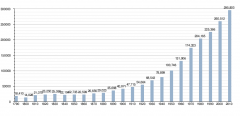
With its abundance of government and technology jobs, Lexington has one of the nation's most stable economies. Lexington has been described as having "a fortified economy, strong in manufacturing, technology and entrepreneurial support, benefiting from a diverse, balanced business base". The Lexington Metro Area had a July 2008 unemployment rate of only 5.4%. Lexington was named the 4th best city for "Businesses and Careers" in 2011 by Forbes Magazine, the 5th best city for Young Professionals in 2008 and 6th Best Value Cities 2011 by Kiplinger. As such, the city is home to several large corporations. There are three Fortune 500 companies located within the city, Affiliated Computer Services, Lexmark International and Hewlett Packard, employing 1,200, 3,450, and 250 respectively. United Parcel Service, Trane, Tempur-Pedic, International and Amazon.com, Inc. have a large presence in the city, and Toyota Motor Manufacturing Kentucky is within the Lexington CSA in adjoining Georgetown. The city is also host to a Jif peanut butter plant that produces more peanut butter than any other factory in the world, and to the Forcht Group of Kentucky, a holding company that employs more than 2,100 people across Kentucky. Forcht Group operates several businesses in Lexington including First Corbin Bancorp, Kentucky National Insurance Company, My Favorite Things, BSC, a bank data services company, and First Lab, among others.
The city's largest employer, the University of Kentucky, as of 2012, employs about 14,000, although that number is expected to shrink due to reduced funding from the state. The University is the ninth largest economic company in the state of Kentucky, with an annual budget of $1.4 billion, and the College of Medicine within the University is the 21st-largest company in the state.
Other sizable employers include the Lexington-Fayette County government and other hospital facilities. This includes the Fayette County Public Schools, employing 4,651, and the Lexington-Fayette Urban County Government, employing 3,936. Central Baptist Hospital, Saint Joseph Hospital, Saint Joseph East, and the Veterans Administration Hospital employ 6,206 total.
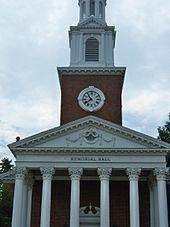
According to the United States Census, of Lexington's population over the age of twenty-five, 22.4% hold a bachelor's degree, 11.4% hold a master's degree, and 3.1% hold a professional degree. Just 2.6% hold a doctorate degree. Lexington was ranked 10th in a list of America's most educated cities with a population of more than 250,000, ranked by percentage of bachelor's degrees among residents 25 and older, according to the United States Census Bureau. In a report released by Jack Miller, president of Central Connecticut State University, Lexington ranks 13th in the United States in terms of literacy rate. The index was compiled through six indicators of literacy, including Internet sources, newspaper circulation, the number of bookstores, library resources, education and periodical resources.
The city is served by the Fayette County Public Schools. The system consists of 5 high schools, 11 middle schools, and 33 elementary schools, along with six private schools. There are also two traditional colleges: the University of Kentucky, which is the state's flagship public university, and Transylvania University, which is the states oldest four year university. Other institutions of higher learning include Bluegrass Community and Technical College, Sullivan University, Spencerian College, Medtech College, Strayer University, Commonwealth Baptist College, and a newly opened distance-learning extension of Indiana Wesleyan University.
Lexington is home to many thriving arts organizations including a professional orchestra, two ballet companies, professional theatre, several museums including a basketball museum, several choral organizations and a highly respected opera program at the University of Kentucky. In addition, there are several events and fairs that draw people from throughout the Bluegrass.
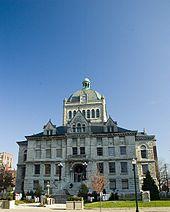
Mayfest Arts Fair is a free outdoor festival that takes place annually over Mother's Day weekend. Held in Gratz Park between the Carnegie Center and Transylvania University, the festival typically features up to 100 art and craft booths, live entertainment throughout the weekend, food, children's activities, adult activities and literary events, free carriage rides, a traditional Morris and Maypole dance and various demonstrations.
Taking part the first full weekend of June is the Festival of the Bluegrass, Kentucky's oldest bluegrass music festival. It includes three stages for music and a "music camp" that teaches the bluegrass music to school children. Also in June is the popular Broadway review presented by UK Opera Theatre, "It's A Grand Night for Singing!" usually held the 2nd and 3rd weekends.
Later in June, the Gay and Lesbian Service organization hosts the Lexington Pride Festival, currently into the planning phases of its third festival as of 2009, the event is popular among the diverse communities in Lexington.
Lexingtonians gather downtown for the Fourth of July festivities which extend for several days. On July 3, the Gratz Park Historic District is transformed into an outdoor music hall when the Patriotic Music Concert is held on the steps of Morrison Hall at Transylvania University. The Lexington Singers and the Lexington Philharmonic Orchestra perform at this event. On the Fourth, annual festivities include a reading of the Declaration of Independence on the steps of the Old Courthouse, a waiter's race in Phoenix Park, a parade, a country music concert, and fireworks. Also, throughout the day street vendors sell their wares and food to the downtown visitors. The Fourth of July is considered to be the biggest holiday in Lexington.
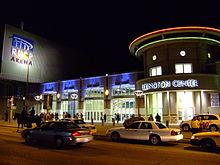
"Southern Lights: Spectacular Sights on Holiday Nights", taking place from November 18 to December 31, is held at the Kentucky Horse Park. It includes a three-mile (5 km) drive through the park, showcasing numerous displays, many in character with the horse industry and history of Lexington. The "Mini-Train Express", an indoor petting exotic animal petting zoo, the International Museum of the Horse, an exhibit showcasing the Bluegrass Railway Club's model train, and Santa Claus are other major highlights.
In 2002 Lexington became the first city to launch a Thriller video reenactment as a Halloween festivity. The video aos storyline and dance sequences are faithfully recreated, beginning outside the historic Kentucky Theatre and featuring hundreds of zombies who attend rehearsals at nearby Mecca Live Studio in the weeks leading up to the parade. Lexington aos 10th annual Thriller Parade was sponsored by Lexington Parks and Recreation, Mecca, and WRFL FM 88.1, and took place on October 30, 2011 for an audience of thousands, with Albert Ignacio playing the role of Michael Jackson. Lexington aos March Madness Marching Band also performs in zombie attire.
The Lexington Christmas Parade: Held usually the day after Thanksgiving, the parade route follows Main Street between Midland and Broadway. Festivities include a Holiday Market with over 25 arts and craft vendors, a stage with entertainment, food, and the annual tree lighting ceremony, which occur in Triangle Park.
Other events and fairs include:
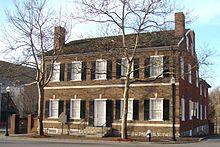
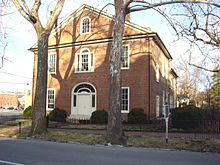
Lexington is home to numerous museums and historical structures. One of the most famous is Ashland: The Henry Clay Estate along Richmond Road east of downtown. This two-story museum is a National Historic Landmark and was the former home of statesman Henry Clay.
Lexington Public Library, in the Phoenix Park area near the geographic center of Lexington, houses the world's largest ceiling clock, a five-story Foucault pendulum and a frieze depicting the history of the horse in the Bluegrass. The library and its branches also house art galleries and traveling exhibits.
The Pope Villa, built in 1811, is one of the best surviving domestic designs by the architect Benjamin Henry Latrobe. It is being restored by the Bluegrass Trust for Historic Preservation, which also maintains and administers the Hunt-Morgan House.
Another important museum is the Lexington History Center in the old Fayette County Courthouse in the heart of downtown. It offers two museums, one dedicated to the history of the region and the other dedicated to public safety. A third museum, devoted to the history of pharmaceuticals in the Bluegrass, is under construction. It will also be home to the Isaac Scott Hathaway Museum in 2007 as well. Additional historic sites are the following:
The University of Kentucky Art Museum is the premier art museum for Lexington and the only accredited museum in the region. Its collection of over 4000 objects ranges from Old Masters to Contemporary, and it also hosts ongoing special exhibitions.
The local Woolworth's building was listed on the National Register of Historic Places for its significance as a site of civil rights protests against segregation during the 1960s. The building was demolished by its owner in 2004 and the area paved for use as a parking lot until further development.
Lexington's largest daily circulating newspaper is the Lexington Herald-Leader. The region is also served by eight primary television stations, including WLEX, WKYT, WDKY, WTVQ, The CW, WKLE, and MyNetworkTV, and online news agency KyForward.com. The state's public television network, Kentucky Educational Television (KET), is headquartered in Lexington and is one of the nation's largest public networks.
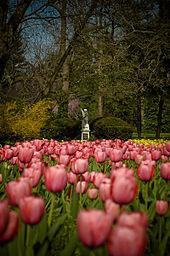
Lexington has over 100 parks ranging in size from the 8,719-square-foot (810.0 m2) Smith Street Park to the 659-acre (2.7 km2) Masterson Station Park. There are also six public golf courses at Avon, Kearney Links, Lakeside, Meadowbrook, Tates Creek and Picadome and four dog parks, at Jacobson, Masterson Station, Coldstream, and Wellington. It also has two public 18-hole disc golf courses at Shillito Park and at Veterans Park, and a public skate park at Woodland Park, featuring 12,000 square feet (1,100 m2) of "ramps, platforms, bowls, and pipes".
Lexington Cemetery is on the National Register of Historic Places, not only because of notable people interred there, but because it was founded during the major cholera epidemic of 1848.
Lexington is home to two historic horse racing tracks. Keeneland, sporting live races in April and October since 1936, is steeped in tradition where much has not changed since the track's opening. The Red Mile Harness Track is the oldest horse racing track in the city, and second oldest in the nation. This is where horses pull two-wheeled carts called sulkies while racing, also referred to as harness racing. The Kentucky Horse Park, located along scenic Iron Works Pike, is a relatively late-comer to Lexington, opening in 1978. It is a working horse farm and an educational theme park, along with holding the distinction of being a retirement home for some of the world's greatest competition horses including Cigar and 2003 Kentucky Derby winner Funny Cide. Lexington also played host to the 2010 FEI World Equestrian Games in September and October 2010.
The city is home to Raven Run Nature Sanctuary, a 734-acre (3.0 km2) nature preserve along the Kentucky River Palisades. There are 11 miles (18 km) of back-country hiking trails that range from wheelchair-accessible paved trails to difficult single-track trails. It is common to run across hopeful Appalachian Trail backpackers. The city has recently purchased land adjacent to the park which will make Raven Run the largest park in the city. Raven Run is home to over 56 species of trees, 600 species of plants, 200 species of birds, and other wildlife. Remains of a grist mill, homestead and limekiln remain. The preserve also has a nature center and various educational programs throughout the year. Such programs include seasonal wildflower walks, stargazing during the warmer months, evening insect tours, and historical walks and presentations.
The Arboretum is a 100-acre (0.40 km2) preserve adjacent to the University of Kentucky. It features the Arboretum Woods, a small, 16-acre (65,000 m2) Bluegrass Woodland patch that is home to eighteen native Kentucky tree species, and more than 50 native Kentucky grasses and herbs. It also has 1,500 varieties of roses in the Rose Garden, a Home Demonstration Garden, and numerous paved paths and trails.
The city also plays host to the historic McConnell Springs, a 26-acre (110,000 m2) park within the industrial confines off of Old Frankfort Pike. There are two miles (3 km) of trails that surround the namesake springs, historic dry-laid stone fences, and historical structures.
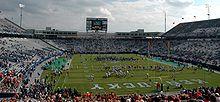
The Kentucky Wildcats, the athletic program of the University of Kentucky, is by far Lexington's most popular sports entity. The school fields 22 varsity sports teams, most of which compete in the Southeastern Conference. The most famous team by far is the men's basketball team, which has won 8 NCAA championships and is the winningest program in college basketball history, being the first to reach 2000 wins. Lexington's only other collegiate team, the Transylvania University Pioneers, competes in NCAA Division III athletics.
Lexington produced a number a major collegiate and professional athletes. The more well known include World Athletics Championships multiple gold medal-winning sprinter Tyson Gay; former Tates Creek High School and Louisville Cardinals kicker David Akers, who is the all-time scoring leader for the Philadelphia Eagles; former Louisville Cardinals football player and Cleveland Browns cornerback Frank Minnifield; Miami Marlins outfielder Austin Kearns; former Kentucky and Pittsburgh Steelers center Dermontti Dawson; and NBC Sports announcer Tom Hammond.
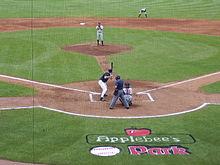
Lexington is home to the Lexington Legends, a Class A minor league affiliate of the Houston Astros. Since its inception in 2001, Lexington has produced numerous major leaguers including: 2009 National League All-Star Hunter Pence (Outfielder) of the San Francisco Giants, John Buck (Catcher) of the Florida Marlins, Mike Gallo (Pitcher), who is currently a free agent, and Josh Anderson, (Right fielder) who is currently a Free Agent. The Legends belong to the South Atlantic League, have one league title (2001) and four playoff appearances since 2001. Roger Clemens pitched in one game for the Legends in 2006 as part of his preparation to return to the Houston Astros.
Lexington was at one time home to the Lexington Horsemen, an arena football team in the arenafootball2 league.
Lexington was at one time home to the Kentucky Thoroughblades, a minor league (AHL) hockey team that played between 1996 and 2001. For one season (2002 ae2003) the ECHL Men O' War played minor league hockey in Lexington.
The University of Kentucky Hockey team competes at club level in the American Collegiate Hockey Association
For a time the city was home to the Lexington Bluegrass Bandits who competed in the USL Premier Development League
In fall 2009, Lexington's first professional basketball team, the American Basketball Association's Bluegrass Stallions, tipped off at Kentucky Horse Park.
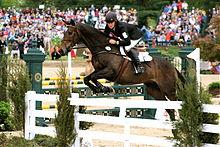
Lexington has been known as a major center for Thoroughbred breeding since the late 18th century due to the high calcium content in the soils of the Inner Bluegrass Region, which leads to stronger bones and greater durability in horses. The city is home to two horse racing tracks, Keeneland and the The Red Mile harness track.
The Kentucky Horse Park in Northern Fayette County hosts the Rolex Kentucky Three Day Event, one of the top 3 annual equestrian eventing competitions in the world. The city hosted the 2010 FEI World Equestrian Games from September 25 to October 10, 2010. Beginning in 2011, the Kentucky Horse Park is also the host to the National Horse Show.
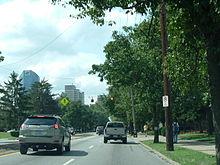
Lexington is serviced by both Interstate 64 and Interstate 75, though neither they nor any other freeway run through the city proper. New Circle Road (KY 4) acts as an inner-beltway around the city, Man o' War Boulevard is a semi outer-beltway south of New Circle Road, and numerous U.S. routes and arterial highways radiate out from downtown to provide access to the numerous bedroom communities ringing the metropolitan area. Citation Boulevard is planned to provide some relief to northern New Circle between Leestown Road and Russell Cave Road. Lexington suffers considerable traffic congestion for a city of its size due to the lack of out- or inbound freeways, the proximity of the University of Kentucky to downtown, and the substantial number of commuters from outlying towns.
The Blue Grass Airport is Lexington's primary commercial airport. It provides approximately 13 nonstop flights and a total of 86 flights daily from its two runways. Six major airlines operate connection service at Blue Grass, including Airtran Airways, Allegiant Air, American Eagle Airlines, Delta Air Lines, United Express, and US Airways Express.
The airport is located four miles (six km) west of the city center, at the intersection of US 60 (Versailles Road) and Man o' War Boulevard.
In addition to commercial airline service, the airport is also home to several private {general aviation} operators. TACAIR is located on Bluegrass Field, along with a brand new general aviation runway 9-27 dedicated August 4, 2010. In addition to private charter services, there is a student pilot training center and the Aviation Museum of Kentucky.
Lexington is served by LexTran, a public transit bus agency operated by LFUCG and has been in existence since 1972.
The Lexington Area Metropolitan Planning Organization is responsible for transportation planning for Fayette and Jessamine Counties. This includes activities such as carpool matching, administering a commuter vanpool program, air quality forecasting, bicycle and pedestrian planning, congestion management, and developing transportation plans and documents.
Lexington has four sister cities, as designated by Sister Cities International:
All four are, like Lexington, major centers of the Thoroughbred breeding industry in their respective countries.

Word Count: 5860






